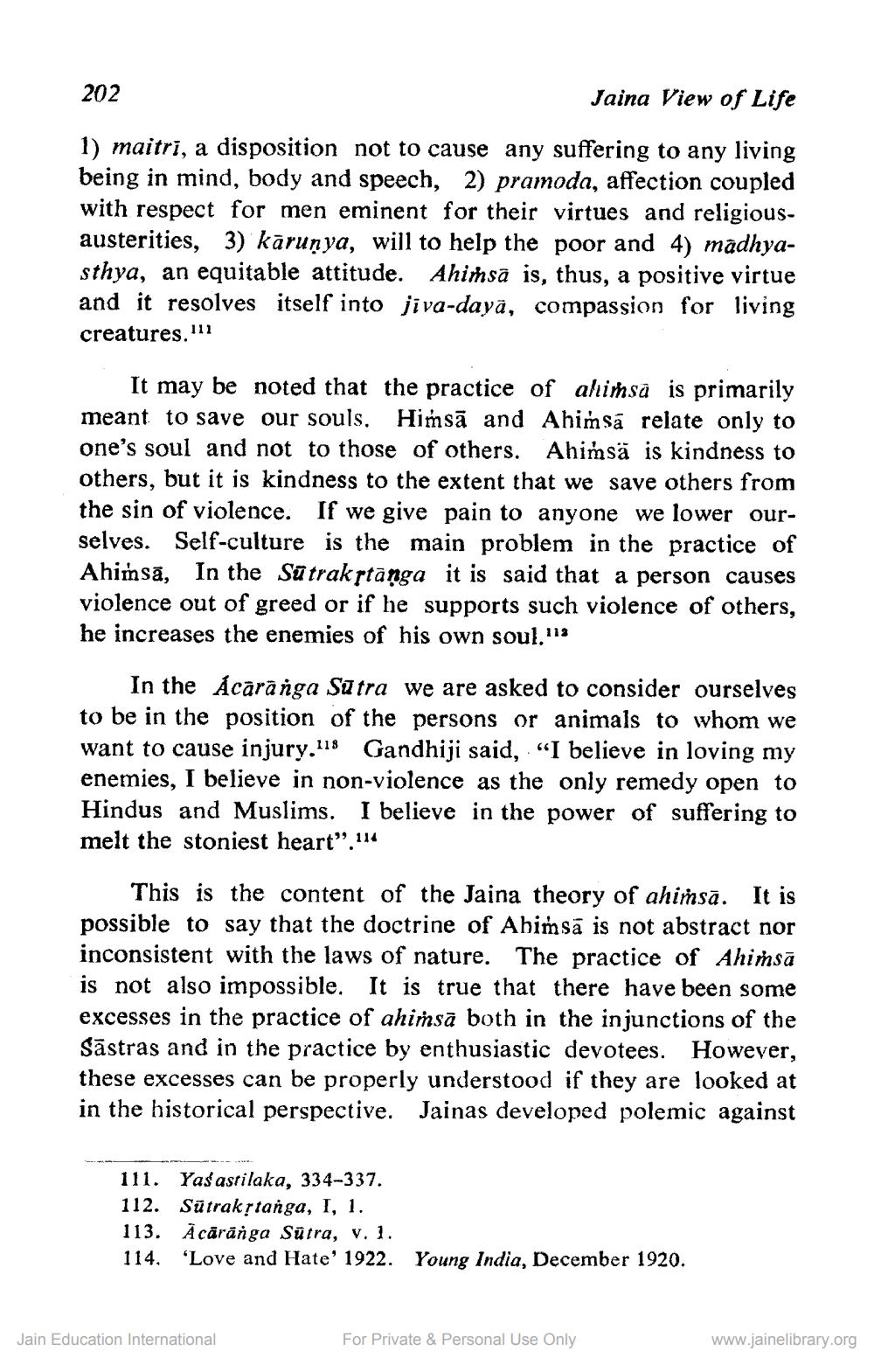________________
202
Jaina View of Life
1) maitri, a disposition not to cause any suffering to any living being in mind, body and speech, 2) pramoda, affection coupled with respect for men eminent for their virtues and religiousausterities, 3) kārunya, will to help the poor and 4) madhyasthya, an equitable attitude. Ahimsa is, thus, a positive virtue and it resolves itself into jiva-dayā, compassion for living creatures. 111
It may be noted that the practice of alimsā is primarily meant to save our souls. Hińsā and Ahimsa relate only to one's soul and not to those of others. Ahińsä is kindness to others, but it is kindness to the extent that we save others from the sin of violence. If we give pain to anyone we lower ourselves. Self-culture is the main problem in the practice of Ahirnsā, In the Sūtrakstānga it is said that a person causes violence out of greed or if he supports such violence of others, he increases the enemies of his own soul."18
In the Ácaranga Sutra we are asked to consider ourselves to be in the position of the persons or animals to whom we want to cause injury.118 Gandhiji said, “I believe in loving my enemies, I believe in non-violence as the only remedy open to Hindus and Muslims. I believe in the power of suffering to melt the stoniest heart”. 114
This is the content of the Jaina theory of ahimsā. It is possible to say that the doctrine of Abińsā is not abstract nor inconsistent with the laws of nature. The practice of Ahimsā is not also impossible. It is true that there have been some excesses in the practice of ahimsā both in the injunctions of the Sāstras and in the practice by enthusiastic devotees. However, these excesses can be properly understood if they are looked at in the historical perspective. Jainas developed polemic against
111. Yas astilaka, 334-337. 112. Sūtrakstanga, I, 1. 113. Acāränga Sütra, v.1. 114. 'Love and Hate' 1922. Young India, December 1920.
Jain Education International
For Private & Personal Use Only
www.jainelibrary.org




